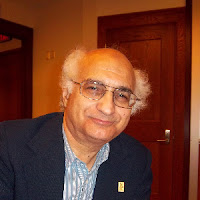September 25, 2010 12:02 AM MST
While Georgetown University lacks the reputation of producing libertarian scholars and activists that adheres, for instance, to nearby George Mason University in Virginia, its list of liberty-oriented alumni is not insubstantial.
That list includes 2008 Libertarian Party presidential nominee Bob Barr; Cato Institute vice president Gene Healy; syndicated columnist Deroy Murdock; Goldwater Institute president Darcy Olsen; and investment advisor Doug Casey, who graduated from Georgetown in 1968 with classmate Bill Clinton. In addition, the president and co-founder of Students for Liberty, Alexander McCobin, is currently a doctoral student in philosophy at Georgetown.
‘Community for pro-liberty students’
When Hoyas for Liberty hosted a lecture by Muslim libertarian scholar Imad-ad-Dean Ahmad on September 11, the Charlottesville Libertarian Examiner spoke with the group’s president, Preston Mui, about libertarians on campus at the oldest Catholic university in the United States.
Mui, a double-major in political economy and mathematics, explained that Hoyas for Liberty was begun during the last academic year but just received official university recognition this year. The group’s advisor is business school professor Phillip Swagel, who served in the George W. Bush administration as assistant secretary of the Treasury for economic policy.
“The goal of Hoyas for Liberty,” said Mui, “is to create a community for pro-liberty students and connect them with the rest of the D.C. and national pro-liberty community.”
Lectures and films
To do this, the group sponsors lectures for students with speakers who “talk about the ideas of liberty.”
Past speakers have included Fox News commentator Tucker Carlson and Chief Deputy U.S. Marshal Matthew Fogg of Law Enforcement Against Prohibition, who addressed “racism and the drug war, on 4/20.” Next month, he said, “we’re going to have Lloyd Cohen, a professor at GMU law [school], speaking on kidney markets.”
Hoyas for Liberty also hosts movie screenings. The next film scheduled, on September 28, is the award-winning documentary, The Lottery, about the failures of the public school system and the attempts by parents to escape it. Other films come from the Moving Picture Institute catalog.
Outreach plans
 |
| Robert Kaminski, Preston Mui, and Stephen Wooten |
Outreach like that is part of Hoyas for Liberty’s plan to improve reception on a campus best known for conventional views about politics and government.
“We’re testing the waters” now, said Mui. “We really don’t know how we’ll be received but I think as long as we stay respectful and above the fray and really [take] the high ground, we’ll do OK. We plan on reaching out to other student groups and I think that will really help.”
Hoyas for Liberty is also cooperating with the Liberty Society at George Washington University, which helped bring Imad-ad-Dean Ahmad to campus, and “going to things like the Students for Liberty conferences” and to social events in the D.C. area for libertarian students, such as monthly student-focused lectures and receptions at the Cato Institute.
For maximum accessibility, Hoyas for Liberty has both a Facebook page and a web site.
Publisher's note: This article was originally published on Examiner.com on September 25, 2010. The Examiner.com publishing platform was discontinued July 1, 2016, and its web site went dark on or about July 10, 2016. I am republishing this piece in an effort to preserve it and all my other contributions to Examiner.com since April 6, 2010. It is reposted here without most of the internal links that were in the original.
















